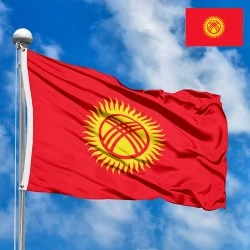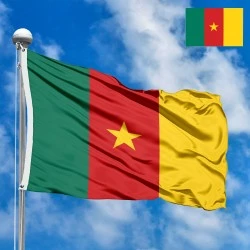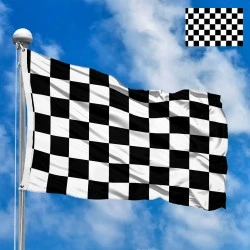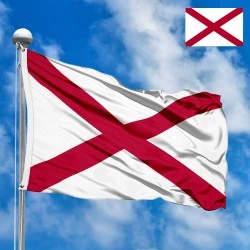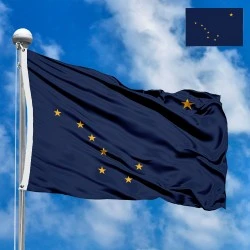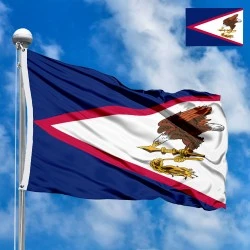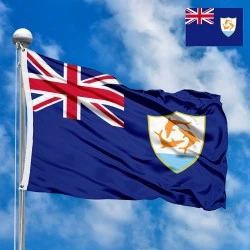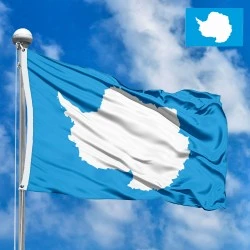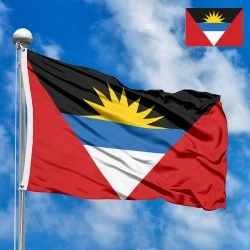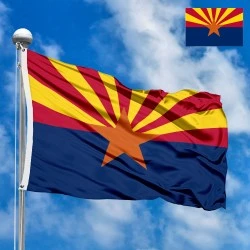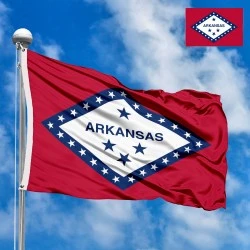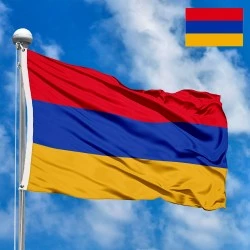Flag of Kyrgyzstan
- Flag Type: State
- Proportions (official): 3:5
- Official name: Kyrgyz Republic
- Local name: Кыргыз Республикасы
- Sovereignty (year): YES (1991)
- Member of Organizations: UN, Organization of Islamic Cooperation, Organization of Turkic States
- Country code, territory: KG, KGZ, 417
- Capital: Bishkek
- Large cities: Osh, Jalal-Abad, Karakol
- Population: ~7,300,000 (2024, NSC)
- Religions: Islam (Sunni) ~80%, Christianity (Orthodox) ~15%
- Area (km²): 199 951
- Highest point: Jengish Chokusu (7,439 m)
- Lowest point: Kara Darya (132 m)
- Currency: Kyrgyzstani som (KGS, с)
- Languages: Kyrgyz, Russian
- Dialing code: +996
- National domain: .kg
Flag Information
General information
Demography and Culture
Economy and communications
- All Flags
- Flags of Countries by Continent
-
Flags of Organizations
- Flags of UN countries
- Flags of the European Union countries
- Flags of NATO countries
- Flags of the countries of the Organization of Islamic Cooperation
- Flags of the countries of the Organization of American States
- Flags of the Arab League countries
- Flags of the African Union countries
- Flags of the countries of the Union of South American Nations
- Flags of the Commonwealth of Nations
- Flags of the countries of the Secretariat of the Pacific Community
- Flags of the Nordic Council countries
- Flags of the Caribbean Community
- Flags of the countries of the Association of Southeast Asian Nations
- Flags of the East African Community
- Flags of the countries of the Organization of Turkic States
- LGBT Community Flags
- Historical Flags
- Ethnic Flags
- Flags of the USA (states)
Description
The flag of Kyrgyzstan, a vibrant and deeply symbolic banner, stands as a testament to the nation's rich nomadic heritage, its aspiration for a bright future, and its enduring connection to nature. Dominated by a striking red field, it features a central yellow sun disc with 40 rays, inside of which is a stylized representation of a tündük, the crown of a traditional Kyrgyz yurt. This powerful design, officially adopted after the collapse of the Soviet Union, encapsulates the essence of Kyrgyz identity.
Dimensions, Colors, and Arrangement of Elements: The design of the Kyrgyz flag is carefully structured, with each element contributing to its overall meaning.
-
The flag typically has an aspect ratio of 3:5, meaning its width is one and two-thirds times its height. This elongated rectangular shape provides ample space for its central emblem.
-
The dominant color is red, forming the entire background of the flag. This deep, rich red symbolizes:
-
Valor and courage: It reflects the bravery and resilience of the Kyrgyz people throughout their history, particularly in defending their freedom and independence.
-
Unity and sacrifice: It also represents the unity of the nation and the sacrifices made for its sovereignty.
-
-
At the center of the red field is a yellow (or golden) sun disc. This radiant sun is a universal symbol of:
-
Peace and prosperity: It signifies a desire for a peaceful and prosperous future for the nation.
-
Wealth and abundance: Historically, gold has represented wealth, and in the context of Kyrgyzstan, it also alludes to the fertile land and its resources.
-
Eternity and light: The sun is a constant source of light and life, symbolizing the enduring spirit of the Kyrgyz people.
-
The sun disc has 40 rays emanating from it. These rays represent the 40 clans that, according to the Epic of Manas (the longest epic poem in the world and a cornerstone of Kyrgyz culture), were united by the legendary hero Manas. This detail underscores the historical and mythical foundations of the Kyrgyz nation.
-
-
Inside the sun disc, precisely in its center, is a stylized representation of a tündük. The tündük (or tyundyuk) is the wooden crown or opening at the top of the yurt, the traditional nomadic dwelling of the Kyrgyz people. This element is highly significant:
-
Home and hearth: It symbolizes the ancestral home, the family, and the warmth of the hearth, representing the continuity of generations and the importance of tradition.
-
Universe and cosmos: From a broader perspective, the tündük can also be seen as a representation of the universe, with its cross-shaped structure echoing the four cardinal directions and the circular opening allowing light to enter, connecting the inside of the yurt to the sky.
-
Prosperity and well-being: It represents the well-being of the family and the stability of society.
-
The tündük is also depicted in yellow (golden), maintaining the cohesive color scheme within the central emblem.
-
History of the Flag's Creation and Adoption: The path to the current flag of Kyrgyzstan is closely tied to the nation's regaining independence after centuries of foreign rule.
-
Ancient and Pre-Soviet Symbols: Before the Soviet era, various banners and symbols were used by different Kyrgyz tribes and khanates, often featuring nomadic motifs, animals, or celestial elements. However, there was no single unified national flag.
-
Soviet Era (1936-1991): During the Soviet period, as the Kirghiz Soviet Socialist Republic (Kirghiz SSR), the republic adopted flags that conformed to Soviet vexillological principles. These flags were predominantly red, featuring the hammer and sickle, a gold-bordered five-pointed star, and often a light blue stripe representing the Issyk-Kul lake or the mountain ranges. The Kyrgyz SSR flag saw several minor variations over the decades, but all were distinctly Soviet in design, suppressing any overt national symbols.
-
National Revival and Independence Movement (Late 1980s - Early 1990s): With the onset of Perestroika and the weakening of Soviet control in the late 1980s, a strong national revival movement emerged in Kyrgyzstan. Discussions about national symbols, including a new flag, began to gain momentum.
-
Development of the Modern Flag: The design of the current flag was the result of a national competition. A group of five artists – Esenbek Sydykov, Bekbosun Zhaichybekov, Sabaydat Ibraev, Idris Aidarbekov, and Zhusup Mataev – developed the winning design. Their proposal carefully integrated historical, cultural, and natural elements.
-
Official Adoption (1992): The flag of the Kyrgyz Republic was officially adopted on March 3, 1992, following the country's declaration of independence from the Soviet Union on August 31, 1991. This adoption was a pivotal moment, symbolizing Kyrgyzstan's new sovereign status and its break from the Soviet past. The selection of the tündük and the 40 rays of the sun immediately rooted the new flag in the deep historical and cultural narrative of the Kyrgyz people.
Symbolism and Meaning for Residents: For the people of Kyrgyzstan, the flag is far more than just a piece of fabric; it's a profound emblem of their identity, history, and aspirations.
-
National Sovereignty and Independence: The flag is the primary symbol of Kyrgyzstan's hard-won sovereignty and independence after centuries of foreign domination. It represents the nation's self-determination and its place among the world's independent states.
-
Unity of the People: The 40 rays of the sun specifically represent the unity of the 40 Kyrgyz clans, emphasizing the cohesive nature of the nation despite its diverse tribal origins. This reinforces the idea of a unified Kyrgyz people.
-
Connection to Nomadic Heritage: The tündük is a direct link to the nomadic heritage and traditional lifestyle of the Kyrgyz people. It evokes images of vast steppes, yurts, and the strong connection to nature that defines their culture. It symbolizes home, family, and the continuity of their unique way of life.
-
Peace and Prosperity: The golden sun symbolizes peace, warmth, and prosperity, reflecting the people's desire for a bright and flourishing future. It represents the life-giving force and abundance of their land.
-
Courage and Resilience: The red background stands for the courage, valor, and resilience of the Kyrgyz people, who have historically defended their land and traditions. It reminds them of their ancestors' bravery and their own strength in overcoming challenges.
-
Cultural Identity: The flag is a powerful representation of Kyrgyz cultural identity, distinguishing them from other nations and connecting them to their unique history, folklore (especially the Manas Epic), and traditions.
-
Aspiration for the Future: While rooted in the past, the flag also looks towards the future, symbolizing the aspirations of the Kyrgyz people for stability, development, and well-being for future generations.
-
International Recognition: When displayed internationally, the flag instantly identifies Kyrgyzstan, evoking its rich cultural heritage and its status as a sovereign nation.
Interesting Facts: The flag of Kyrgyzstan is replete with fascinating details that highlight its unique cultural and historical significance.
-
The "Manas" Connection: The 40 rays of the sun are a direct reference to the 40 legendary clans united by the epic hero Manas, whose exploits are chronicled in the Epic of Manas. This epic is not just a story; it's considered the foundational text of Kyrgyz culture and national identity.
-
The "Tündük" as a National Icon: The tündük is not only on the flag but also features prominently on the national emblem (coat of arms) of Kyrgyzstan, further cementing its status as a central national symbol. It's often seen in national artwork, architecture, and souvenirs.
-
Architectural Inspiration: The design of the tündük on the flag is a stylized cross, often representing the support structure and the opening through which light and smoke pass in a yurt. It's an iconic piece of nomadic architecture.
-
Symbol of Stability and Home: The tündük's design implies stability and permanence, even for a nomadic people. It represents the fixed point of the home, around which life revolves.
-
Single National Symbol Competition: The current flag was selected through a national competition that invited artists and citizens to submit their designs, fostering broad public engagement in the creation of a new national symbol.
-
Unique Among Central Asian Flags: While other Central Asian flags often feature elements like stars, crescents, or traditional patterns, Kyrgyzstan's use of the tündük is distinct and directly links its flag to its unique nomadic history.
-
Colors with Deep Meanings: The choice of red and yellow is deliberate and deeply rooted in historical and cultural meanings, not just aesthetics. These colors have been significant in Turkic and nomadic cultures for centuries.
-
Celebrated on Flag Day: Kyrgyzstan celebrates National Flag Day on March 3rd each year, commemorating the official adoption of the flag. This day is marked by ceremonies, educational events, and public displays of the flag.
-
Global Recognition: Since its adoption, the Kyrgyz flag has become instantly recognizable on the international stage, representing a vibrant nation with a rich heritage.
In the demonstration images, full-size flags are shown with proportions of 2:3, and hand-held flags with proportions of 1:2.
Donation
Download
Completely free for commercial and non-commercial use (public domain).
You can freely use them in your news magazines, websites, software, mobile applications.
We appreciate a backlink to https://flagssite.com
Raster files - Flag of Kyrgyzstan (PNG, JPG)
 Waving flag
Waving flag
- PNG format (transparent background), 72dpi, dimensions in Pixels (px), aspect ratio 3:4.
- 15х20 px
- 30х40 px
- 60х80 px
- 120x160 px
- 240x320 px
 Sizes:
Sizes:
"v15" - image size (by height); if necessary, replace with available: v15, v30, v60, v120, v240.
!!! For resizing, use the Latin (eng) keyboard layout.
<img src="https://flagssite.com/flags/v15/20360.png" alt="Flag of Kyrgyzstan">
 Round flag
Round flag
- PNG format (transparent background), 72dpi, dimensions in Pixels (px), aspect ratio 1:1.
"d15" - image size (diameter); if necessary, replace with available: d15, d30, d60, d120, d240.
!!! For resizing, use the Latin (eng) keyboard layout.
<img src="https://flagssite.com/flags/d15/20360.png" alt="Flag of Kyrgyzstan">
 Rectangular flag 2:3
Rectangular flag 2:3
- JPG format, 72dpi, dimensions in Pixels (px), aspect ratio 2:3.
"h30" - image size (by height); if necessary, replace with available: h15, h30, h60, h120, h240, h360, h480.
!!! For resizing, use the Latin (eng) keyboard layout.
<img src="https://flagssite.com/flags/h30/20360.jpg" alt="Flag of Kyrgyzstan">

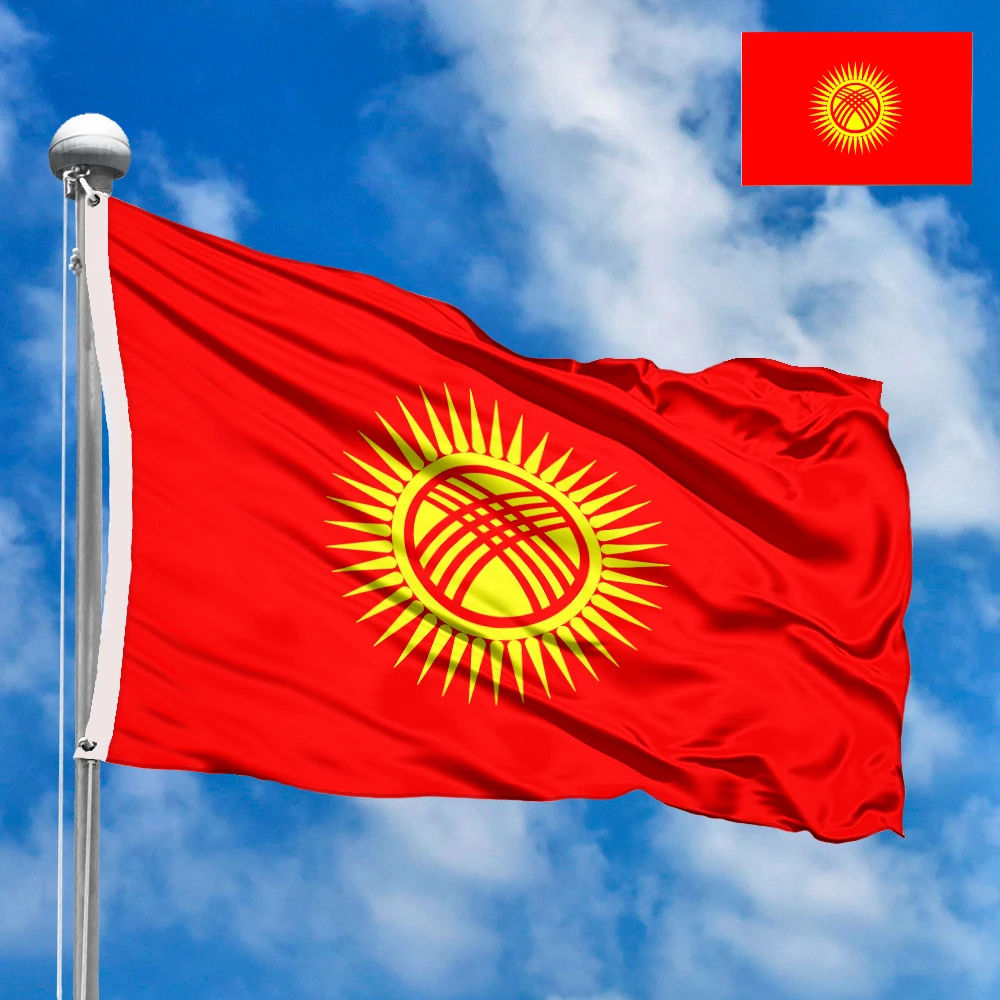
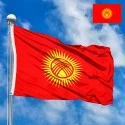
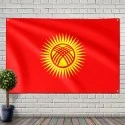
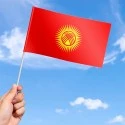

 Sizes:
Sizes:
 Sizes:
Sizes:
